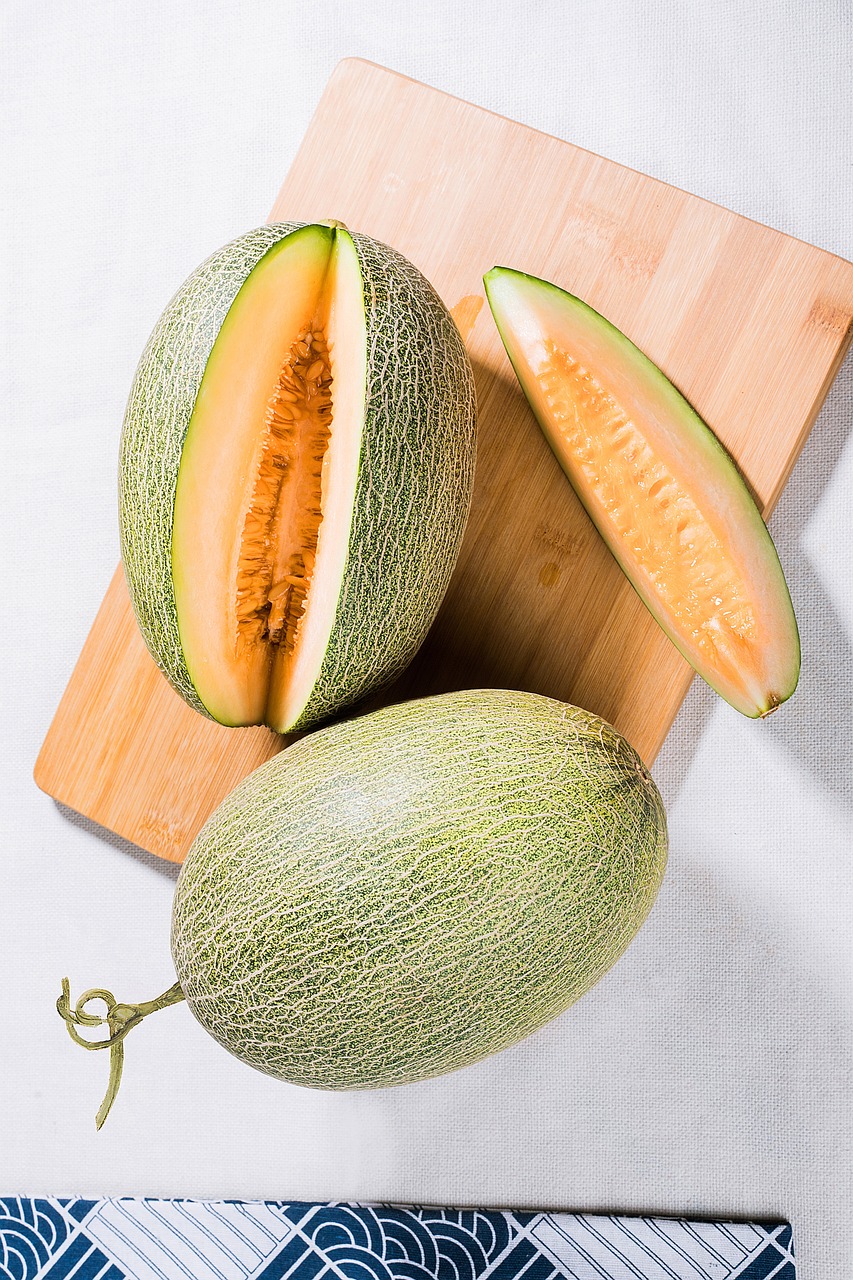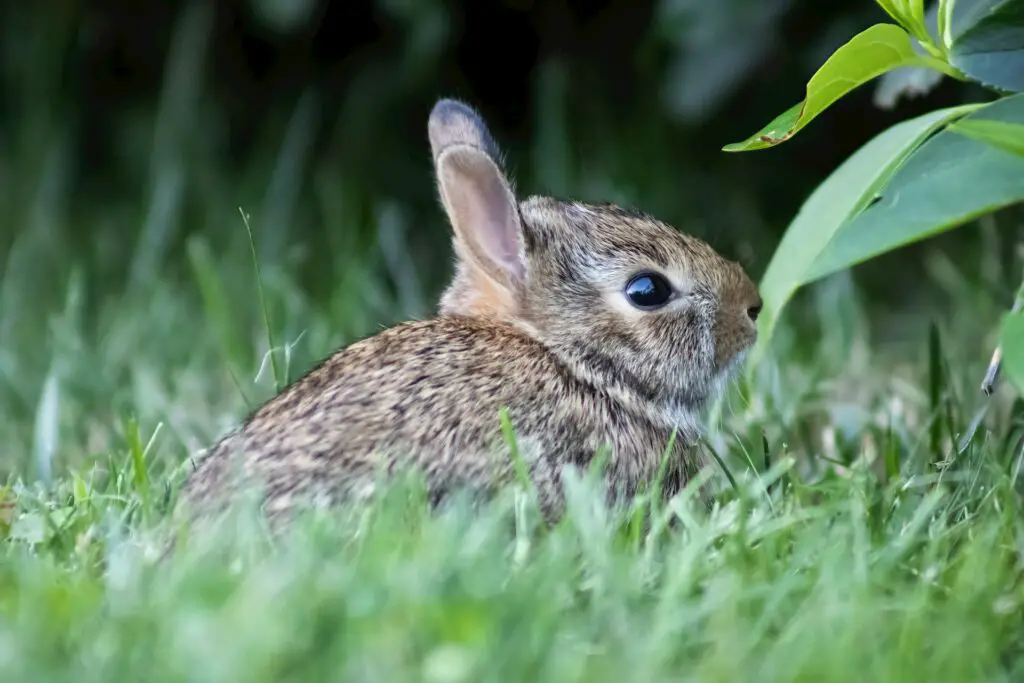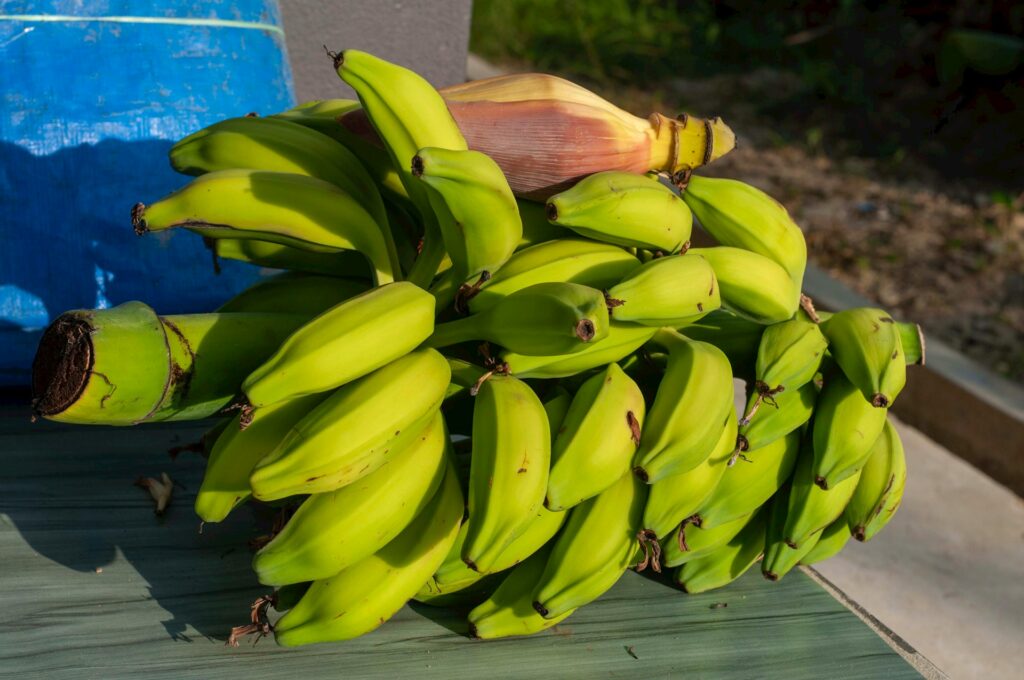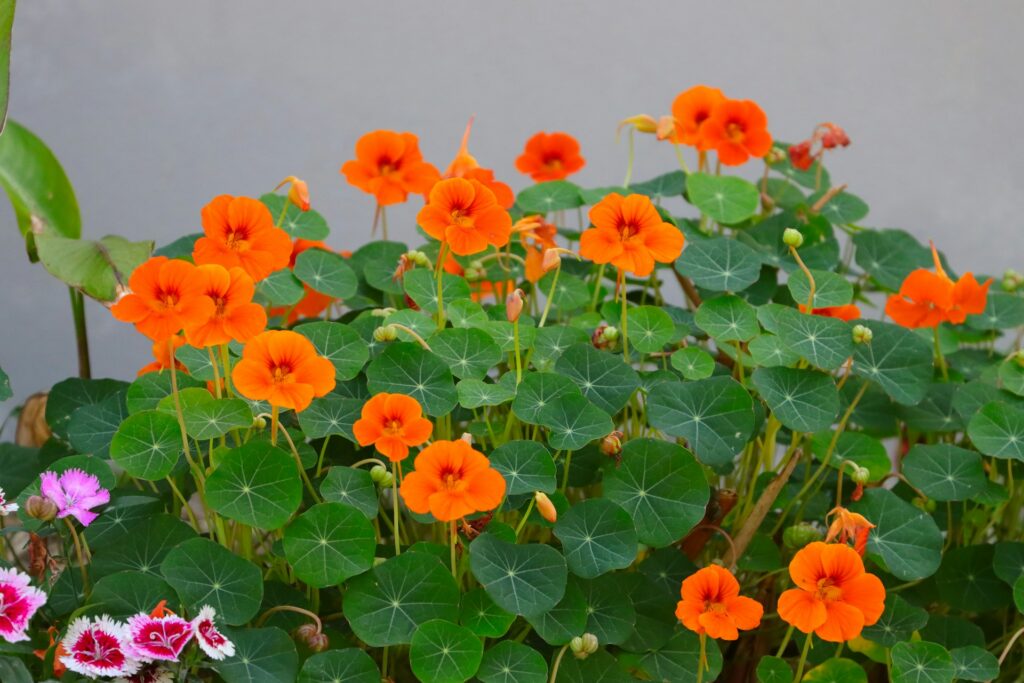
Immerse yourself in the art of cantaloupe companion planting and uncover the secret to a vibrant and fruitful harvest. This comprehensive guide will walk you through the best and worst companions for your cantaloupe plants, offering insights into creating a synergistic garden space. Whether you’re a seasoned gardener or a green-thumbed newbie, this article is packed with valuable tips to elevate your cantaloupe game.
What Are Companion Plants and Why Do They Matter for Cantaloupe?
Companion planting is an age-old gardening technique that involves placing different plants in close proximity for mutual benefit. It’s a natural way to enhance plant growth, improve soil health, and manage pests. For cantaloupe, a plant that thrives in warm soil and requires plenty of space to sprawl, choosing the right companions can make all the difference in achieving a bountiful harvest.
Cantaloupes, with their sprawling vines and large, sweet fruits, are a staple in many summer gardens. But they’re not just about the juicy payoff; they’re heavy feeders and can attract a host of pests. That’s where companion plants come in – they can provide essential nutrients, improve soil structure, ward off pests, and attract beneficial insects, all of which can contribute to a more robust cantaloupe plant.
How Can Marigolds Benefit Your Cantaloupe Plants?
Marigolds are not just a pretty face in the garden; they are workhorses when it comes to companion planting with cantaloupes. These vibrant flowers emit a substance from their roots and a strong scent from their blooms that can deter many garden pests, including nematodes, which are microscopic worms that can damage cantaloupe roots. By planting marigolds around your cantaloupe patch, you create a protective barrier that not only defends your melons but also adds a splash of color to your garden.
The benefits of marigolds extend beyond pest control. They can also attract pollinators and beneficial insects, such as ladybugs and lacewings, which prey on aphids and other pests. Furthermore, marigolds are relatively low maintenance and can thrive in conditions similar to cantaloupes, making them an ideal companion.
Can Cucumbers and Cantaloupes Grow Together?
While cucumbers and cantaloupes are both members of the Cucurbitaceae family, they have similar needs and potential issues. Growing them together can lead to direct competition for water, nutrients, and space, which might not be ideal for gardeners with limited space. Moreover, they can fall prey to the same diseases and pests, such as cucumber beetles and powdery mildew, which could spread more rapidly if they are planted in close proximity.
However, if you have ample space, you can strategically plant cucumbers and cantaloupes together with a few considerations. Ensure that there is enough room for both to spread out, and practice crop rotation to prevent disease build-up. Also, consider using trellises for cucumbers to maximize vertical space and reduce the footprint of their vines.
The Role of Lettuce in Cantaloupe Companion Planting
Lettuce is a cool-season crop that can be an excellent companion for warm-season cantaloupes. It grows quickly and stays low to the ground, making it an ideal living mulch. This living mulch can help retain soil moisture, suppress weeds, and keep the soil cool, which is beneficial for the cantaloupe’s root system that prefers cooler soil temperatures. Lettuce also has a shallow root system, meaning it won’t compete with the deeper roots of the cantaloupe for nutrients. This complementary relationship allows the cantaloupe to access the nutrients it needs from deeper in the soil while the lettuce takes what it requires from the topsoil. Furthermore, the rapid growth cycle of lettuce means you can harvest it before the cantaloupe vines have spread too widely, making efficient use of garden space in the early part of the growing season.
Why Should You Plant Radishes Near Your Cantaloupe?
Radishes are another fantastic companion for cantaloupes for several reasons. Firstly, they mature quickly, which means they can be harvested before the cantaloupe plants become too large. This quick turnaround can prevent overcrowding and ensures that the radishes don’t compete with cantaloupes for space and resources.
Moreover, the strong odor of radishes can act as a natural pest deterrent, potentially keeping harmful insects away from your cantaloupes. Radishes can also serve as a trap crop, attracting pests like flea beetles and root maggots away from your cantaloupes. In addition, radishes can help break up compacted soil with their strong, penetrating roots, improving soil aeration and drainage for the benefit of cantaloupe plants.
How Does Basil Act as a Pest Repellant for Cantaloupes?
Basil, with its strong, pungent scent, is a natural repellent for many types of garden pests that could otherwise harm cantaloupe plants. It can deter thrips, whiteflies, and even tomato hornworms, which might find their way to your cantaloupes. Planting basil around your cantaloupe patch creates a fragrant barrier that confuses pests and masks the enticing smell of ripening melons.
Additionally, basil is known to attract beneficial insects, such as bees, which are essential for pollinating cantaloupe flowers. Without pollination, cantaloupes will not produce fruit, so having a plant like basil to ensure a healthy population of pollinators can significantly increase your cantaloupe yield.
Should Watermelon Be Planted Next to Cantaloupe?
Watermelons and cantaloupes, while relatives in the Cucurbitaceae family, are not the most compatible when planted side by side. They have similar requirements for water and nutrients and can end up competing with each other, which can lead to suboptimal growth for both plants. Additionally, because they are susceptible to many of the same diseases and pests, planting them together can increase the risk of these issues spreading from one plant to the other.
To avoid these problems, it’s best to plant watermelons and cantaloupes in separate areas of the garden. If space is limited, consider choosing one or the other, or plant them at opposite ends of the garden space to minimize the risk of cross-contamination. This separation can help ensure that each plant has access to the resources it needs without undue competition.
Attracting Pollinators: The Importance of Flowering Companions
Pollinators are vital to the success of many fruit-bearing plants, including cantaloupes. Without the transfer of pollen from male to female flowers, cantaloupes will not develop. Therefore, attracting bees, butterflies, and other pollinating insects is essential for a good harvest.
Flowering companions such as bee balm, lavender, and nasturtium not only add aesthetic value to your garden but also serve a crucial functional purpose by attracting pollinators. These plants produce nectar and pollen that lure pollinators into the garden, increasing the chances of pollination for cantaloupe flowers. Moreover, these flowering companions can bloom at different times, providing a continuous source of food for pollinators throughout the growing season.
The Impact of Oregano on Cantaloupe Plant Health
Oregano is a hardy herb that complements cantaloupe well in a companion planting setup. The strong scent of oregano can mask the smell of ripening cantaloupe, making it less attractive to pests. Additionally, oregano can attract a host of beneficial insects, including predatory wasps and tachinid flies, which prey on common garden pests that might otherwise target cantaloupe plants.
Planting oregano near cantaloupes can also improve the overall biodiversity of your garden. This diversity can lead to a more balanced ecosystem, where pest populations are kept in check naturally. Oregano is a perennial herb, so once established, it can provide these benefits year after year with minimal maintenance.
What Are the Worst Cantaloupe Companion Plants to Avoid?
While many plants can benefit cantaloupes, there are also some that should be avoided. Plants that are heavy feeders, such as corn and sunflowers, can compete with cantaloupes for essential nutrients and may inhibit their growth. Similarly, plants that attract similar pests or are prone to the same diseases should be planted away from cantaloupes to prevent the spread of issues. For instance, avoid planting cantaloupes near squash, pumpkins, and other cucurbits to reduce the risk of shared pests like squash bugs and cucumber beetles.
Furthermore, some plants can inhibit the growth of cantaloupes through allelopathy, a biological phenomenon where one plant releases chemicals that can adversely affect the growth of others. Walnut trees, for example, exude juglone, a substance that can be toxic to cantaloupe plants. It is crucial to be aware of such interactions and plan your garden layout accordingly to ensure that your cantaloupes can thrive.
Nasturtiums: The Peppery Protectors of Cantaloupe
Nasturtiums are not only edible and ornamental but also serve as excellent companions for cantaloupes. These vibrant plants can repel a variety of pests, including aphids and beetles, with their robust scent. Nasturtiums can also serve as a trap crop, luring pests away from cantaloupes and other more valuable plants in your garden.
The peppery leaves and flowers of nasturtiums are rich in nutrients and can be used in salads, adding a culinary bonus to their companion planting benefits. Moreover, they are easy to grow and can thrive in conditions that are less than ideal, making them a low-maintenance addition to any cantaloupe patch.
Maximizing Space and Nutrition: The Benefits of Growing Beans with Cantaloupe
Beans are a great companion for cantaloupes for several reasons. They are nitrogen-fixers, meaning they have the ability to convert atmospheric nitrogen into a form that is usable by plants. This natural fertilization can benefit cantaloupes, which are heavy feeders and require a lot of nutrients to produce their fruit.
Additionally, beans grow vertically and can be trained up trellises or other supports, which can help maximize space in the garden. This vertical growth habit allows the cantaloupe vines to spread out along the ground while the beans take up minimal space. Beans also have a relatively small root system, so they won’t compete heavily with cantaloupes for soil nutrients.
How Sunflowers Serve as Stalwart Guardians for Cantaloupes
Sunflowers may be tall and commanding, but they can play a protective role when planted near cantaloupes. Their towering presence can provide shade and a windbreak for heat-sensitive cantaloupes during the hottest parts of the day. This can be especially beneficial in regions where the sun can be too intense for young cantaloupe plants.
Moreover, sunflowers are known to attract a variety of pollinators with their large, nectar-rich blooms, which is beneficial for the pollination of cantaloupe flowers. However, it’s important to plant sunflowers at a sufficient distance to prevent competition for nutrients and to avoid shading the cantaloupes too much as they mature, as cantaloupes themselves require plenty of sunlight to thrive.
The Dynamic Duo: Cantaloupe and Corn Compatibility
Corn can be a good companion for cantaloupes under certain conditions. Tall corn stalks can provide some shade for cantaloupe plants, which can be beneficial in preventing sunscald on the fruit. The structure of corn stalks can also serve as a natural trellis for cantaloupe vines, allowing them to climb and potentially improving air circulation around the plants.
However, care must be taken because corn is also a heavy feeder and can compete with cantaloupes for water and nutrients if not managed properly. To minimize competition, ensure there is ample space between the corn and cantaloupe plants and consider using additional fertilizer to satisfy the nutrient needs of both crops.
Tansy and Cantaloupe: A Match to Manage Pests
Tansy is a herbaceous plant with a strong aroma that can repel a variety of garden pests, including ants, cucumber beetles, and squash bugs, which are all threats to cantaloupe plants. Planting tansy around the perimeter of your cantaloupe patch can act as a natural deterrent, reducing the need for chemical pesticides.
In addition to its pest-repelling properties, tansy can attract beneficial insects like predatory wasps, which can help control caterpillar populations. However, tansy should be used with caution as it can be invasive and toxic to livestock and pets if consumed in large quantities. Always plant tansy in a controlled manner and keep it away from areas where animals graze.
Final Thoughts on Cantaloupe Companion Planting
Companion planting is a strategic and sustainable gardening practice that can enhance the health and productivity of your cantaloupe plants. By carefully selecting companion plants, you can create a diverse ecosystem that supports robust growth and minimizes pest and disease problems.
It’s important to consider the specific needs and growth habits of each companion plant to ensure they are compatible with cantaloupes. Remember to allow adequate space for each plant to grow, provide sufficient nutrients and water, and manage the timing of planting to avoid competition and maximize the benefits of companion planting.
In addition to the companions mentioned, incorporating a variety of flowers and herbs can contribute to a balanced garden environment. Plants like calendula, chamomile, and mint can also offer benefits such as attracting beneficial insects, improving soil health, and providing additional culinary and medicinal uses.
As with any gardening practice, observation and adaptation are key. Monitor your garden closely to see how different plants interact and adjust your strategy as needed. Over time, you will develop a sense of what works best for your garden’s unique conditions and for your cantaloupe plants.
Companion planting is part art and part science, and with experience, you can create a thriving garden that is both productive and beautiful. Happy gardening!




